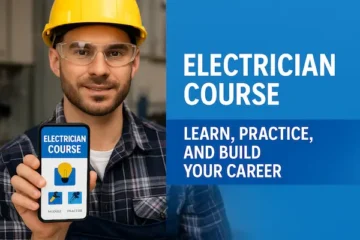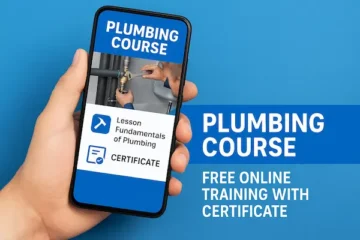How to Write a Good Essay (Step by Step): A Comprehensive Guide
Essay writing can often feel challenging, but understanding the step-by-step process makes it manageable.
A good essay starts with a clear and engaging introduction that captures the reader’s attention and states the main point. This initial section sets the stage for what follows and guides the reader through the essay’s argument or narrative.
Crafting the body of the essay involves organizing thoughts logically and using evidence to support the central idea.
Each paragraph should focus on a single point, ensuring that ideas flow smoothly from one to the next. Transition sentences play a key role in linking these ideas, helping to keep the reader engaged.
In the end, a strong conclusion ties everything together, reinforcing the essay’s main point. It’s important to review the essay, checking for clarity and coherence.
By following these steps, anyone can learn how to write an effective essay that clearly communicates their ideas.
Understanding the Basics
Knowing the foundational elements of essay writing can help any writer craft clear and effective pieces. This section covers what an essay is and why a strong thesis statement is essential.
Defining the Essay
An essay is a structured piece of writing used to explore a topic or argue a point. It’s built around a central main idea or question. Essays typically include an introduction, body paragraphs, and a conclusion.
A clear main idea helps guide the content. The introduction presents the topic and the body paragraphs expand with supporting details.
Each paragraph usually starts with a key sentence. This helps the reader connect information back to the main idea.
Recognizing the essay’s structure is crucial. It allows the writer to stay organized and logical in their presentation. Without this, an essay can become confusing and lose its purpose.
Importance of a Thesis Statement
The thesis statement is the core of an essay. It expresses the main idea or argument in one or two sentences. This statement usually appears at the end of the introduction.
A well-crafted thesis statement clearly outlines the essay’s purpose. It guides the reader by hinting at the direction and scope of the essay. It should be specific, direct, and relevant to the topic.
Writers must ensure that all parts of the essay relate to the thesis. This keeps the content focused and reinforces the central message. A strong thesis makes an essay more persuasive and gives the reader a reason to care.
Planning and Structuring
Good essay writing begins with careful planning and creating a solid structure. Begin with research to gather evidence. Then, outline the essay to organize ideas and ensure a logical flow.
Research and Evidence Gathering
Start by understanding the essay’s topic. They should read books, articles, and other sources to gather information.
Quality sources provide strong evidence to support the essay’s argument. It’s important to take notes and keep track of where the information comes from.
Organizing the evidence is also essential. They must decide which points are the most compelling and relevant to their thesis. This helps in forming clear body paragraphs with a strong topic sentence.
Each paragraph should present one main idea, backed by solid evidence.
Creating an Outline
An outline acts like a roadmap. Begin by jotting down the main points of the essay.
Start with the introduction, which should include a thesis statement. Then, list the body paragraphs, each beginning with a topic sentence.
Each body paragraph should focus on one idea. They should include evidence to back up these points.
The outline helps ensure that ideas are presented logically and that the essay stays on track. Organizing ideas in this way makes the writing process smoother and more efficient.
Writing the Essay
Writing a good essay involves connecting thoughts clearly and creating a structured flow of ideas. It’s crucial to start with a strong introduction and develop body paragraphs that support the main argument, offering thoughtful analysis throughout.
Crafting a Strong Introduction
A strong introduction grabs the reader’s attention immediately. It starts broadly, provides necessary background information, and narrows down to a specific thesis statement. This main idea sets the stage for the rest of the essay, guiding what the reader should expect.
Connecting the topic to something familiar or relevant can make the introduction engaging. Statistics, quotes, or questions work well to draw interest.
Providing context helps the reader understand the significance of the topic before delving into the details. Finally, a clear thesis statement tells the reader what to anticipate.
Developing Body Paragraphs
Each body paragraph should focus on a single point supporting the thesis. Starting with a clear topic sentence helps to state the main idea of the paragraph.
Evidence or examples can then illustrate the point being made, offering a solid foundation to the paragraph’s argument.
Connecting the topic sentence to the thesis ensures everything ties back to the essay’s purpose. Lists and bullet points can organize information effectively when needed.
End with a sentence that wraps up the paragraph’s idea while contributing to the overall argument.
Arguments and Analysis
A good essay doesn’t just list facts. It analyzes arguments and presents insights that add depth.
Use tables or charts when complex data needs to be simplified for better comprehension. Facts and quotes should be analyzed to explain their significance and how they relate to the thesis.
Multiple perspectives can enrich analysis. Discussions should consider varying interpretations, which strengthens the essay by showing a deeper engagement with the subject.
Using precise language, the writer avoids ambiguity, making the analysis more convincing and reliable.
Effective Transition Usage
Transitions are the bridges between ideas and paragraphs. They ensure a smooth flow of information and help the reader follow the argument.
Basic words like first, next, and finally can guide the reader through sequences or lists, while more complex transitions enhance sophisticated essays.
Besides just words, transitions include repeating key themes or ideas as a way to unify sections. Transitions between sections or ideas prevent staccato or choppy reading.
Using them well keeps the reader engaged and maintains a logical order throughout the essay.
Revising and Refining
Revising an essay involves several steps that are key to improving writing quality. Focus on self-editing, gathering feedback from others, and checking for errors in grammar, spelling, and punctuation.
Self-Editing Techniques
Self-editing is an important first step. Writers should read their essays out loud to catch awkward phrasing.
Changing sentence structures can improve flow and clarity. Look for overly long or confusing sentences and break them up.
Using a pen and paper to mark changes can be more effective than digital methods. Writers should also consider their word choice, aiming for precise language and varied vocabulary.
Checking for gaps in arguments or missing evidence is a key part of making sure ideas are supported.
Peer Review
Peer review provides a fresh perspective. Sharing the essay with classmates or friends can reveal overlooked errors.
It’s helpful to ask specific questions, such as about the clarity of the thesis or the strength of the arguments.
Encourage peers to be honest. Constructive criticism is valuable, even if it sometimes feels harsh.
Writers might notice trends in the feedback, which can highlight particularly strong or weak parts of the essay. Recording peer comments can be useful for identifying patterns.
Proofreading Strategies
Proofreading is the final polish. Focus on fixing errors missed in earlier edits.
Spellcheck tools can help, but should not be relied on completely. Pay attention to commonly confused words like “there,” “their,” and “they’re.”
Reading the essay backward, sentence by sentence, is a useful trick for spotting typos and grammatical errors. Checking punctuation is also important, as errors can change the meaning of sentences.
Make sure every comma, period, and question mark is correctly placed.
Conclusion
A strong conclusion ties together the main ideas of an essay while leaving a memorable impression. This section helps the reader understand the main points and gives them something to think about after reading.
Summarizing the Main Points
In the conclusion, the writer should cover the main ideas without repeating everything from the essay.
Start by identifying the three or four key points discussed. Use concise language to restate these points.
This doesn’t mean copying what was said earlier, but rather showing how everything connects. Reinforce how these points support the main idea.
Clarity and brevity are crucial as they help readers remember the essay’s purpose.
Thoughtful choice of words ensures the key messages stand out. This is the writer’s last chance to leave an impact using summary.
Leaving a Lasting Impression
Apart from summarizing, a conclusion benefits from a strong closing thought. This is where creativity can shine.
One effective method is to address a question raised earlier or to provide a brief look ahead related to the main topic. The goal is to make readers think.
A call to action can inspire them further. This doesn’t mean on-the-nose persuasion but suggests future possibilities.
A personal reflection or broader implication could leave them pondering. Remember; it’s all about impact.
A memorable ending ensures the essay stays with the reader long after they’ve finished reading.






